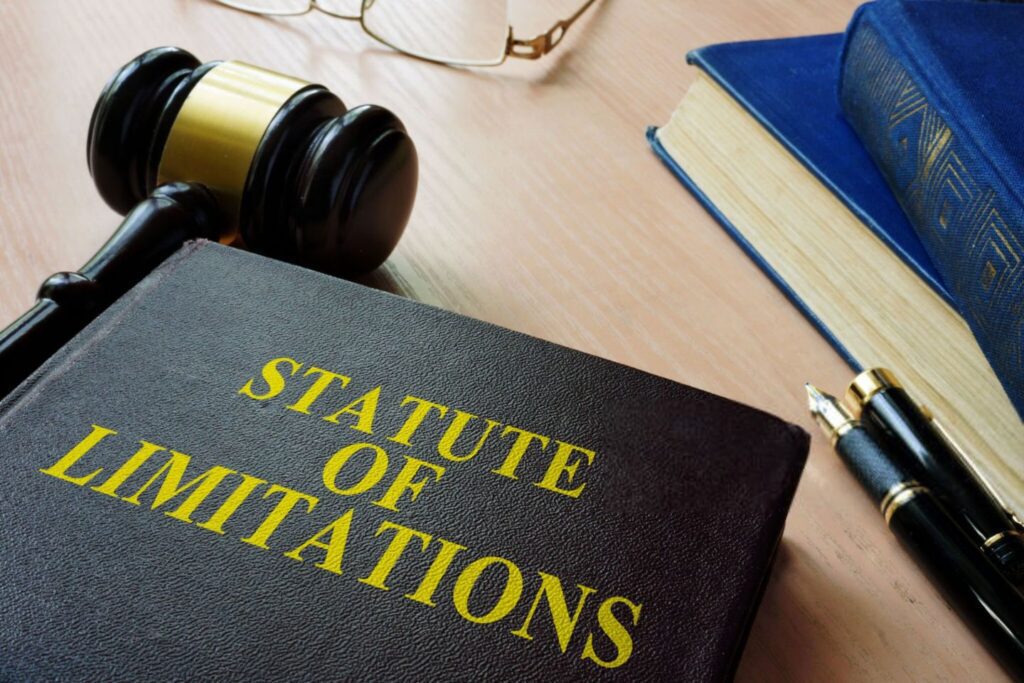Getting a handle on California personal injury laws can feel like navigating through a maze. In this piece, we slice through the fog, presenting lucid perspectives on pivotal aspects of your personal injury situation. You’ll discover the types of damages you might recover, understand how fault is determined, and learn about California’s specific statutes that could affect your claim.
We also dive into why finding the right lawyer could make all the difference and how insurance plays a pivotal role in personal injury cases. Armed with this knowledge, you’ll be better equipped to pursue justice and compensation for any harm suffered.
- Navigating the Basics of California Personal Injury Laws
- Types of Personal Injury Cases
- Liability in Personal Injury Cases
- Statute of Limitations for Personal Injury Claims in California
- The Impact Of Insurance In Personal Injury Cases
- Frequently Asked Questions
- Having Trouble With Personal Injury Claims?
Navigating the Basics of California Personal Injury Laws
California’s personal injury laws are like a complex maze. Knowing your way around can make all the difference when you’re hurt and seeking justice. Navigating the intricacies of personal injury law goes beyond seeking revenge; it’s about safeguarding your financial stability in the wake of an accident you didn’t cause.
Types of Personal Injury Cases
If you have been injured in California due to someone else’s negligence, you may be entitled to compensation. Personal injury cases encompass a wide range of incidents, from car accidents to medical malpractice. Here are some of the most common types of personal injury cases you may encounter:
Motor Vehicle Accidents
Car accidents are one of the most common causes of personal injury claims in California. In 2022, 4,099 people were recorded that has being involved in a motor accident that eventually led to death. This number was lower by 62 people compared to 2021.
If you have been injured in a car accident, you may be able to seek compensation for medical expenses, lost wages, and pain and suffering. It’s important to seek medical attention immediately following a car accident, even if you don’t feel injured at the time. Based on the Vehicle Code, if an accident results in injury or death, the insurance must cover at least $15,000 for one individual. If two people were involved in the accident, each must get at least $30,000
Slip and Fall Incidents
Slip and fall incidents can occur anywhere, from a grocery store to a friend’s house. If you slip and fall due to someone else’s negligence, you may be entitled to compensation for your injuries. Documenting the incident and seeking medical attention as soon as possible is important.
Based on the Premises Liability, everyone is responsible for their actions and for any harm caused to others due to their negligence or lack of care. This applies not just to intentional actions but also to accidents caused by carelessness. People are reprimanded for this in various ways depending on how the accident turns out, whose fault it is, and how damaging the accident is.
An example is the case of Scott v. Alpha Beta Co. (1980), The court attributed 60% of the negligence to the grocery store and 40% to the injured party. The store knew that the floor was slippery due to the persistent rainy weather. However, they failed to warn the customers. The injured customer was also half liable since they already knew that it was possible to slip due to the weather conditions.
Product Liability
If you are injured by a defective product, you may be able to seek compensation from the manufacturer or seller. Product liability cases can include anything from defective car parts to dangerous toys. Civil Code 1714 provides exceptions and clarifications regarding product liability. It outlines that manufacturers or sellers might not be held liable for harm caused by inherently unsafe products known to ordinary consumers, with some exceptions. Individuals affected by product-related harm can still seek legal recourse without facing statutory barriers. This law aims to ensure clarity and accessible legal avenues for those harmed by unsafe products.
A good example of a product liability case is the Grimshaw v Ford Motor Co. The Grimshaw family filed a lawsuit against Ford Motor Company, alleging that the design of the Pinto’s fuel system was defective and unreasonably dangerous. They argued that Ford knew about the potential for the fuel tank to rupture in rear-end collisions but failed to take adequate safety measures. The jury found Ford Motor Company liable for the injuries and death caused by the Pinto’s defective design. They awarded $127.8 million in compensatory and punitive damages to the Grimshaw family, one of the largest product liability verdicts at the time.
Medical Malpractice
Medical malpractice occurs when a healthcare provider fails to provide the appropriate level of care, resulting in injury or death. Medical malpractice cases can be complex, and it’s important to work with an experienced attorney who can help you navigate the legal system.
CCP 340.5 sets the time limit for filing a lawsuit against a healthcare provider for professional negligence. Typically, plaintiffs have three years from the date of injury or one year from discovering the injury to file a claim, whichever comes first. However, exceptions apply if there’s evidence of fraud, intentional concealment, or the presence of a foreign object in the injured person’s body. For minors, the time limit varies based on age, with additional provisions if fraud or collusion is involved. This law ensures fairness and accountability in cases of alleged medical negligence.
A vital example is April Valentine’s lawsuit against Centinela Hospital Medical Center, alleging medical negligence and wrongful death. It was reported that the patient died due to the hospital’s poor service while she was in labor. The family’s legal action has drawn attention to concerns about the quality of care provided by the hospital and has prompted discussions about maternal healthcare disparities, particularly regarding Black women.
Workplace Injuries
In 2022, California had 146,600 injuries and illnesses were recorded towards workplace injuries in local and state government. Based on this record, at least 8.8 workers get an illness or injuries per 100 people. While in private industry, 318,000 people were recorded to have experienced any workplace injuries.
If you are injured on the job, you may be entitled to workers’ compensation benefits. In some cases, you may also be able to pursue a personal injury claim against a third party, such as a manufacturer or contractor. LAB 400 ensues that If someone gets injured or dies because of work, they or someone representing them (like a family member) must notify their employer in writing within 30 days of the injury. This notice is essential to be able to claim compensation related to the injury or death through the workers’ compensation system. Without this notification, it might be challenging to pursue compensation for the injury or loss.
A nurse in California was pinned down by a MRI machine while doing a procedure with a patient. The hospital was fined $18,000 due to this incident.
Liability in Personal Injury Cases


If you have been injured due to someone else’s actions, you may be entitled to compensation. However, determining who is liable for your injuries can be a complex process. In California, several legal theories of liability can be used to hold someone responsible for your injuries.
Negligence
Negligence is the most common theory of liability in personal injury cases. To prove negligence, you must show that the defendant had a duty to exercise reasonable care, that they breached that duty, and that the breach caused your injuries. For example, if you were injured in a car accident, you may be able to prove negligence by showing that the other driver was speeding, ran a red light, or was distracted while driving.
Strict Liability
Strict liability is another theory of liability that can be used in personal injury cases. Under strict liability, a defendant can be held responsible for your injuries even if they were not negligent. Strict liability typically applies in cases involving defective products or abnormally dangerous activities. For example, if you were injured by a defective product, you may be able to hold the manufacturer strictly liable for your injuries.
Comparative Fault
California follows a comparative fault system, which means that if you are partially responsible for your injuries, your damages will be reduced by your percentage of fault. For example, if you were injured in a slip and fall accident at a store, but you were not paying attention to where you were walking, you may be found to be 25% at fault. In this case, your damages would be reduced by 25%.
Vicarious Liability
Vicarious liability is a legal theory that holds one person responsible for the actions of another person. This theory is often used in cases involving employers and employees. For example, suppose you were injured in a car accident caused by an employee driving a company vehicle. In that case, you may be able to hold the employer vicariously liable for your injuries.
Statute of Limitations for Personal Injury Claims in California


If you’ve ever played a game of “beat the clock,” then understanding the statute of limitations for personal injury claims in California will feel eerily similar. Fundamentally, this regulation initiates a timer on your pursuit of reparation and redress following harm. To ensure your pursuit of justice and compensation doesn’t hit a wall, it’s crucial to grasp the ticking timeline governing personal injury claims in California.
Time Limits: The Ticking Clock
In California, the stopwatch starts running from the date of your injury. You have exactly 2 years to file a lawsuit against those responsible for causing harm. Miss this deadline, and it’s game over—no second chances or overtime granted by the court system here.
This rule isn’t just some arbitrary guideline; it’s set in stone within California personal injury laws. Why such strictness? It helps keep cases fresh with evidence more readily available and memories still sharp—vital components when seeking justice.
The Exceptions: Plot Twists Await
However, like any good story, there are exceptions to these rules that might extend—or even shorten—the filing period under certain circumstances:
- Cases involving government entities could push you into an even tighter corner with shorter time limits imposed for filing a notice about your claim.
- If discovering injuries took longer than expected (think hidden medical issues), courts might grant extensions beyond the standard 2-year mark.
Navigating through these nuances without losing track of critical deadlines is why partnering up with seasoned personal injury attorneys can be invaluable—they ensure no detail gets overlooked while racing against time.
The Impact Of Insurance In Personal Injury Cases
When you’re dealing with the aftermath of an accident, navigating through insurance coverage can feel like trying to read a map in the dark. Grasping the intricacies of your insurance plan is crucial for securing the necessary care and recompense you’re entitled to.
Insurance not only covers your medical bills but also significantly influences the direction and outcome of personal injury lawsuits. Whether it’s for personal injuries from a car crash or slip and fall incidents, having adequate insurance coverage could mean the difference between sinking into debt and recovering peacefully.
Economic vs Non-Economic Damages
In California personal injury cases, damages are split into two main categories: economic and non-economic. Economic damages cover tangible losses like medical bills and lost income—expenses that often pile up quickly after an injury. This is where having good insurance coverage becomes crucial; it can help manage these costs while your case is pending.
Non-economic damages account for intangible harms such as pain and suffering—a realm where insurance again has a significant impact by potentially limiting out-of-pocket expenses during this challenging time.
Punitive Damages
Sometimes, if someone’s actions were particularly egregious causing harm intentionally or through gross negligence, courts may award punitive damages on top of compensatory ones. While most insurance policies won’t cover punitive damages directly because they aim to punish rather than compensate, checking your policy details carefully can provide insights into what extent of protection you have against various scenarios.
Frequently Asked Questions
What are the steps to initiate a personal injury lawsuit in California?
To initiate a personal injury lawsuit in California, you must first file a complaint with the court. The complaint should include a description of the incident that caused your injury and the damages you are seeking. After filing the complaint, you must serve it on the defendant. The defendant will then have a certain amount of time to respond to the complaint. If the case proceeds, there will be a discovery phase where both sides gather evidence and take depositions. The case may then go to trial or be settled out of court.
What is the time limit to file a personal injury claim in California?
In California, the time limit to file a personal injury claim is generally two years from the date of the incident. However, there are exceptions to this rule, such as when the injury is not discovered until later or when the defendant is a government entity. It is important to consult with an attorney to determine the applicable statute of limitations in your case.
How are personal injury settlement amounts determined in California?
Personal injury settlement amounts in California are determined based on a variety of factors, including the severity of the injury, the cost of medical treatment, lost wages, and pain and suffering. In some cases, punitive damages may also be awarded. Insurance companies will often use a formula to determine settlement amounts, but it is important to have an attorney negotiate on your behalf to ensure you receive fair compensation.
What factors influence the likelihood of winning a personal injury lawsuit in California?
Several factors can influence the likelihood of winning a personal injury lawsuit in California, including the strength of the evidence, the credibility of witnesses, and the skill of the attorneys involved. It is important to have an experienced personal injury attorney on your side who can build a strong case and effectively argue on your behalf.
How should one respond if sued for a car accident in California?
If you are sued for a car accident in California, it is important to respond promptly and consult with an attorney. Failure to respond to the lawsuit can result in a default judgment against you. An attorney can help you determine the best course of action and may be able to negotiate a settlement on your behalf.
Are there any caps on damages for personal injury cases in California?
California does not have caps on damages for most personal injury cases. However, there are some exceptions, such as medical malpractice cases, where there is a cap of $250,000 on non-economic damages. It is important to consult with an attorney to determine the applicable laws and limitations in your case.
Having Trouble With Personal Injury Claims?
Facing a personal injury? Turn to The Personal Injury Center for expert legal guidance. Our team of experienced lawyers will help you understand your case, negotiate with insurance companies, and pursue the compensation you deserve. Contact us today to schedule a consultation and begin your journey to justice.



